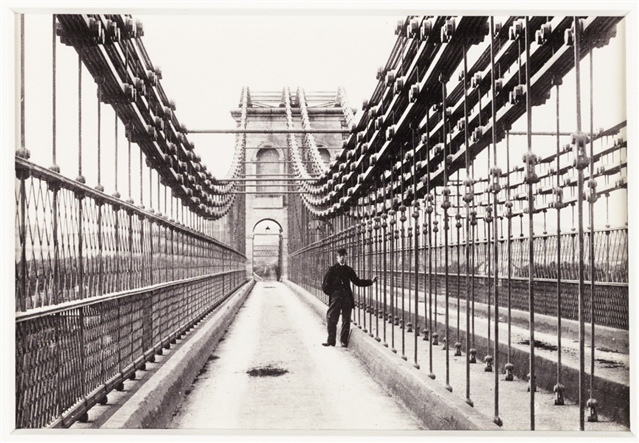On this day in (engineering) history…
Menai Bridge, the world’s first modern suspension bridge, opens January 30, 1826
It is January 30th, 1826. The moment everyone has waited years to see has finally arrived. A crowd has gathered on this chilly, grey January morning to watch the ceremonial cutting of a ribbon, musical accompaniment from a band, to open a new bridge. Today is momentous because the ceremonial is to open the Menai Bridge, the world’s first iron suspension bridge.
Before the bridge opened, travel along the road from London to Holyhead, the closest port to Ireland, would take 36 hours and involved crossing the Menai Strait by boat. The waters of the Strait can be treacherous. Before the bridge, boats crossing the Strait in either direction would have to deal with the four times daily tidal flows rushing through the strait, caused by the twice daily tide. The result is strong currents and whirlpools along the narrow stretch of water.
In 1785, a boat carrying 55 people became stuck on a sand bar in the middle of the channel. During the day attempts to refloat the vessel failed, with the passengers and crew stranded on the bar. As the tide rose that night, all but one of the people stuck on the bar were swept to their deaths.
Farmers wanting to cross with livestock would drive their animals into the strait, hoping they wouldn’t lose too many to the treacherous currents, but always expecting some animals not to reach the other side.

The bridge c. 1880, showing the original cable configuration prior to the installation of steel cables in 1938. From Wikimedia Commons
The Scottish engineer, Thomas Telford, already county surveyor for Shropshire, was tasked with improving the road and making safe the more difficult stretches. Naturally, he would have to raise bridges here and there, the largest of which would be the Menai Suspension Bridge.
This would be expected to span 580 feet (176 metres) and rise above the water to a height of 100 feet, so the Royal Navy and commercial shipping would still be able to use the channel without disruption.
Limestone for the piers would be quarried at the nearby Penmon Quarry and be brought on-site by boat. Two thousand tons[EM1] [SP2] of wrought iron, forged in Shropshire, at Hazeldean’s foundry in Shrewsbury, would be arranged into 16 chain cables made up of 935 wrought iron bars to carry a wooden deck split into two carriageways.
Work began in 1819, using a design from Telford himself. The stonework was completed in 1824. Over ten weeks, the chains would be manhandled into place by 150 men using block and tackle. Portions of the chains were floated into the middle of the Strait on a raft, where they could be connected to chains anchored at points on the North Wales mainland and Isle of Anglesey. Rods were suspended from the chains, then bolted to iron bars that would carry the wooden roadway.
The bridge was finally completed in 1826 and opened to great fanfare. The 36-hour journey by horse drawn carriage to Holyhead was reduced to 27 hours. Compare this to the five to six hours it now takes.
Today, the bridge is not as it first appeared on the day it was opened. Over the decades, it required strengthening. High winds damaged the roadway in 1839. The wooden deck was replaced with a steel one in 1893. In 1938, to cope with modern vehicle traffic, the wrought iron chains, trusses and bracings were replaced with steel chain cables, and without disrupting traffic.
The bridge was closed in 1999 for further strengthening and painting.
Now, the grand old lady still spans the Menai Strait, linking Anglesey to North Wales. While it may no longer be at the cutting edge of technology, and there are far longer suspension bridges in the world. Even so, Menai Bridge was the first and remains a monument to the industrial revolution, still keeping people safe from the whims of the treacherous Strait below it.
--------------------------------------------------
The suspension bridge has served us well, but what records remain to be broken?
How much further can this type of bridge span in the future?
What do you think? Let us, and everyone else, know in the comments below!
---------------------------------------------------
Stephen Phillips is an IET Content Producer, with passions for history, engineering, tech and the sciences.
